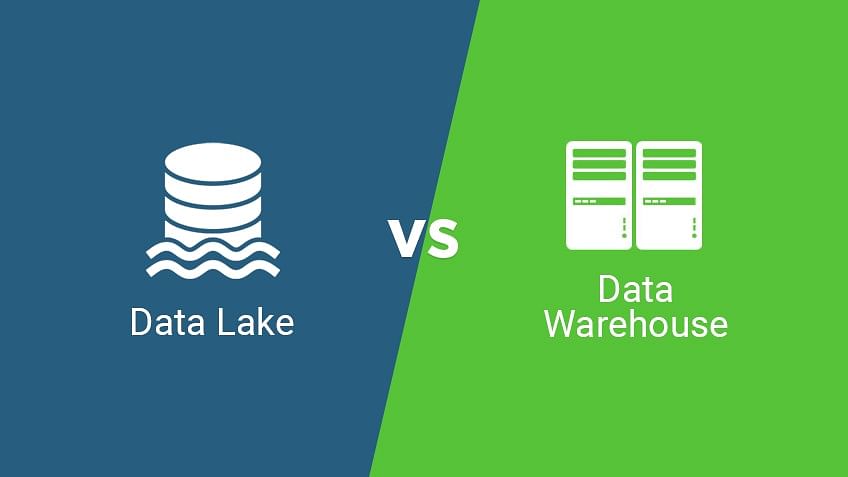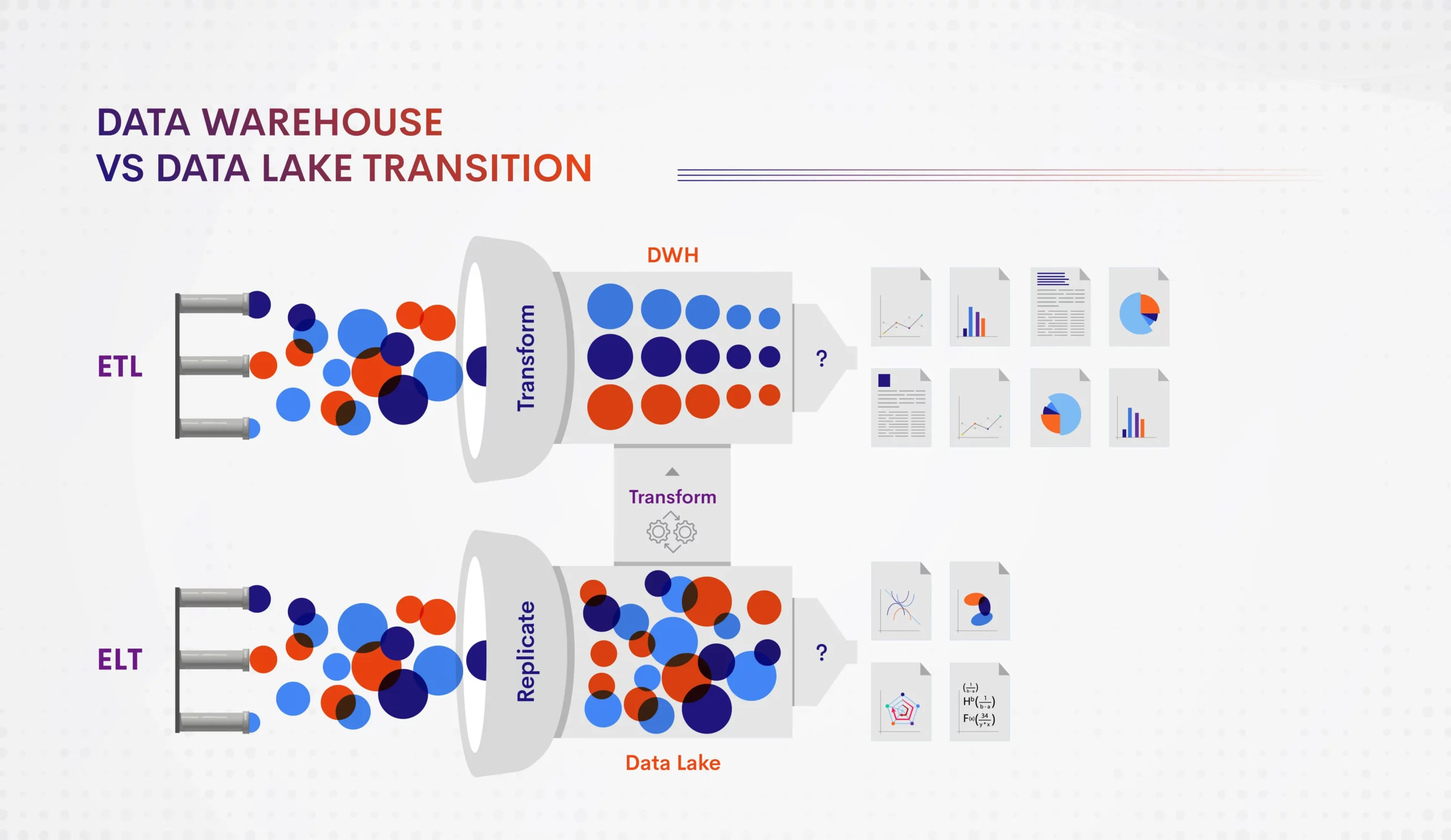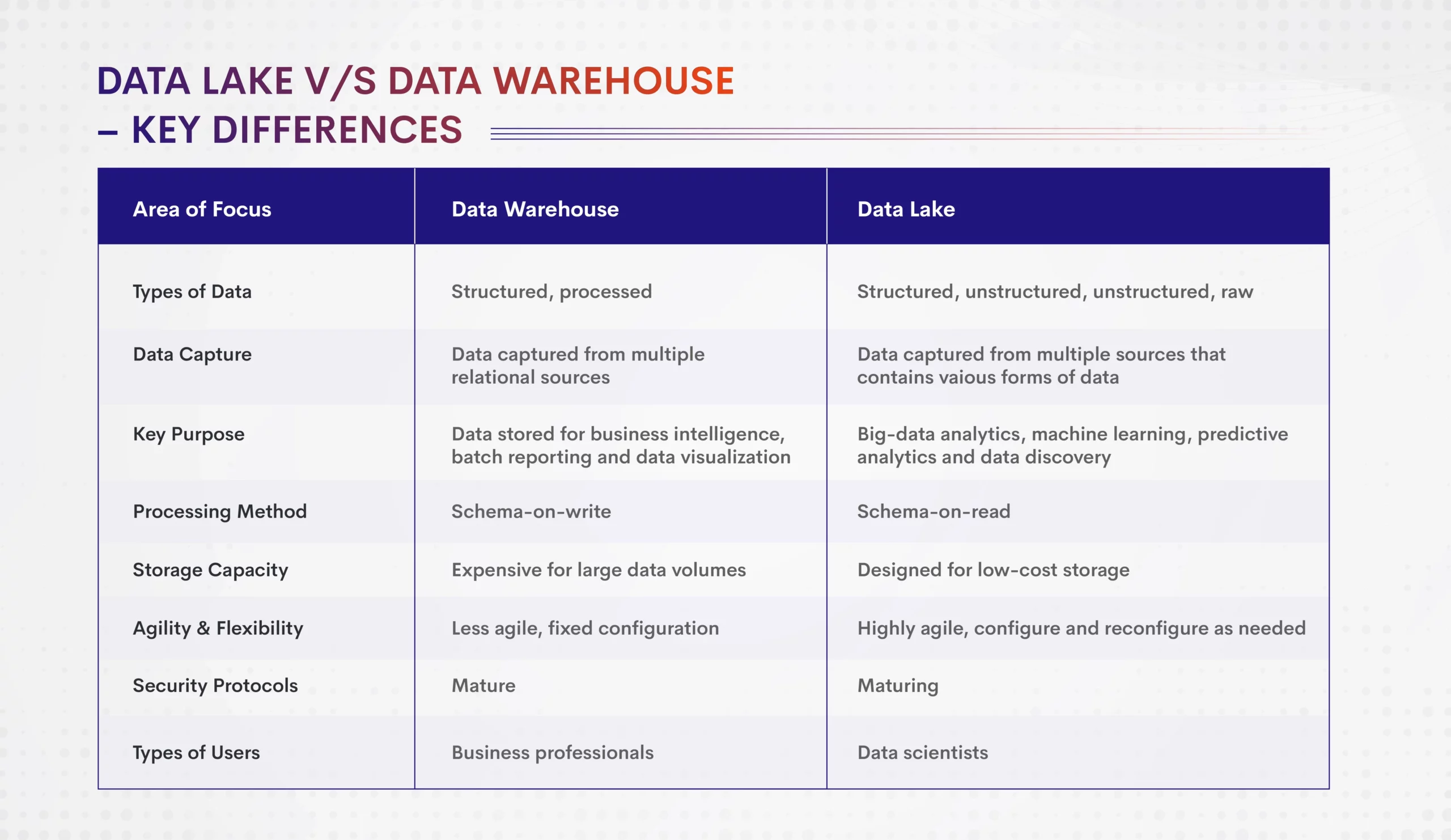- Data & AI
- July 27, 2022
What is Data Lakes V/s Data Warehouse – Key Differences

- Data & AI
- July 27, 2022
What is Data Lakes V/s Data Warehouse – Key Differences
In todays’ hyper digitized world, organizations are relying upon real-time data solutions to collect, report, and analyze data effectively. This way, businesses are able to outperform their rivals, provide a seamless customer experience, and find new growth prospects. The data lake and warehouse, two vital components of business intelligence, assist organizations in enhancing performance. Despite the fact that both data lakes and data warehouses are often used to store large tons of data, there are important structural, processing, and target audience differences between the two. Let us take a closer look at each of them.
Data warehouse vs Data Lake transition
What is Data Warehouse?
Data warehouse run on ETL approach. ETL transforms data before loading it. Different data representations and a wide variety of data sources can produce divergent facts (accounting, billing, banking systems). Additionally, when a complete picture of the data is needed from all business sub-systems, it is challenging to collect consolidated information due to the wide range of schemas and formats in data sources. A data warehouse frequently only keeps structured or modeled data. The raw data is not accessible in the data warehouse.
Data sharing between department-specific databases is a common practice among medium- and large-sized enterprises. A data warehouse can contain information about products, transactions, clients, consumers, inventories, workers, etc.
Data warehouses were previously used by businesses to manage, store, and process acquired data. But the emergence of Big Data put a burden on these systems, filled them to capacity, and increased the cost of storage. Consequently, several businesses began transferring their data into a new category of repository known as a data lake.
What is the Data Lake?
A data lake is a centralized location where all data, whether organized or unstructured, can be gathered on a small or large scale. It is a cost-effective solution for running big data workloads. ETL approach is implemented in data lake. It involves loading the raw data into data lake and performing transformations on the data that has been saved. Without taking into account the prior data’s structure or format, data lakes can alter and store raw data. Only when data needs to be extracted from and analyzed in data lakes is the information structured. The data remains unstructured so that it can be deposited and used for other purposes while the analysis process is ongoing. Additionally, data can be stored without changing the data structure and used for a variety of analytics, including dashboards, visualization, big data conversions, real-time analytics, and machine learning to help businesses make the best decisions possible. Using data lakes, numerous organizations often generate business value from their data to outperform their rivals.
Data Lake V/s Data Warehouse – Key Differences

Unlock unmatched business value with Azure Data Lake
Companies may implement analytics programs fast and create a long-lasting data-friendly culture by using an agile approach to data-lake development. For businesses that wish to benefit from big data, there is the Azure Data Lake solution. It offers a data platform that enables programmers, data scientists, and analysts to store data in any amount and format and carry out any kind of processing or analytics across numerous platforms and coding languages. It is compatible with your current solutions, including identity management and security programs. Additionally, it connects with different data warehouses and cloud settings.
Now you are able to fully utilize your data lake and handle petabytes of data for a variety of workloads, including sentiment analysis, analytics, machine learning, image processing, prediction, and search-driven by artificial intelligence. Businesses are maximizing performance and reducing data transfer delay by utilizing data lake solutions in a cost-effective way. The most important thing is data security; we can assist with putting role-based access control, single sign-on (SSO), multi-factor authentication, and the ability to audit all management and processing operations in place.
Although a Data lake and Data warehouse serve various use cases and have some overlap, a data lake and a data warehouse are not a straight replacement for one another. Most businesses with a data lake also have a data warehouse.
In order to conduct a business analysis, it turns out to be more typical for each firm to have both and transfer data variation from lakes to warehouses. Given the widespread use of data lake and management solutions, it might be tempting to simply purchase a product and move on. The majority of the challenges you’re likely to encounter when converting to a data lake can be overcome with the help of a data integration solution. Look for a solution that can help at every level of enterprise data management, including data ingestion and exchange.
Steps to set up:
- Connect to countless data sources and make it simple for you to add new sources.
- Effortlessly and securely handle data processing
- At any pace, process batch and real-time data.
- Integrate technologies for machine learning and data quality
- Integrated data governance, metadata management, and data lineage tracking are recommended.
- Self-service tools should be made available to all users, including business people and data scientists.
- Run-on any on-premises or cloud platform with integrated data vault services
Finding a product that satisfies each of these criteria will help you set up your data lake successfully and maintain it in the most effective manner for your company.
Wrapping up:
By 2026, the global market for data lakes is expected to be worth US$18.67 billion. Enterprises must adopt well-curated, high-quality data lakes if they want to maximize the value of their data and succeed in this digital age. In addition to preventing any data lake from turning into a data swamp, a clear data strategy, modern data architecture, proper data governance combined with automation, security and privacy measures, and DevOps integration will transform it from merely being a data repository to a dynamic tool that will empower digital transformation throughout an enterprise.




